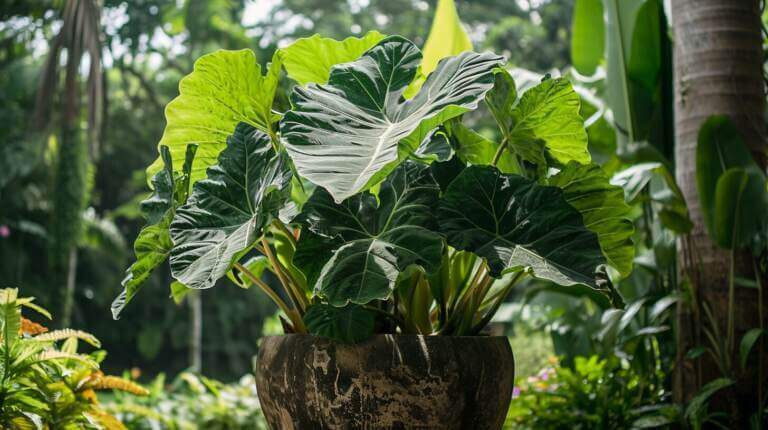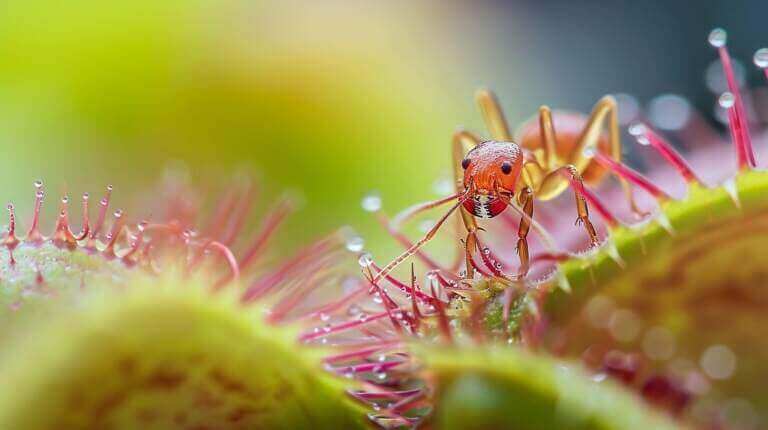A Beginner’s Guide to Growing and Caring for Nerve Plants (Fittonia Albivenis)
Welcome to my beginner’s guide on growing and caring for nerve plants, also known as Fittonia. These beautiful tropical houseplants have vibrant and colorful foliage that can instantly elevate the ambiance of any indoor space. Whether you’re a novice plant owner or an experienced gardener, this comprehensive guide will provide you with all the information you need to successfully nurture your nerve plants and help them thrive.
Key Takeaways:
- A complete guide on growing and caring for nerve plants, also called Fittonia.
- Tips for indoor plant care and creating the ideal tropical houseplant environment.
- Proper watering techniques and preventing common watering issues.
- Choosing the right fertilizer and understanding the importance of regular feeding.
- Techniques for repotting and propagating nerve plants for healthy growth.
All About Nerve Plants
Nerve plants, also known as Fittonia, are a stunning choice for indoor plant enthusiasts. These tropical houseplants are beloved for their vibrant foliage, compact size, and unique veining patterns that resemble the central nervous system. Fittonia leaves come in a variety of colors, ranging from shades of green to pink, red, and white. With their eye-catching leaf colors and intricate vein patterns, nerve plants add a touch of natural beauty to any space.
There are numerous varieties of nerve plants available, each offering its own unique combination of leaf colors. Some popular cultivars include ‘Frankie’ with its pink leaves and green edges, ‘Ruby Red’ with green leaves and crimson striping, and ‘Superba’ with large leaves and creamy white veins. Whether you prefer a bold and vibrant color combination or a more subtle and delicate foliage, there’s a fittonia variety to suit your taste and style.
Fittonia cultivars are not only prized for their striking foliage but also for their adaptability to different indoor environments. These plants can thrive in a range of light conditions, although they prefer bright, indirect light. They also require high humidity levels, so it’s important to create a humid environment by using a humidifier, placing the plant in a bathroom, or misting the leaves regularly. With the right care, nerve plants can thrive and bring life to any indoor space.
Summary
- Nerve plants, or Fittonia, are tropical houseplants known for their vibrant foliage and unique vein patterns.
- There are various nerve plant varieties available, each with its own combination of leaf colors.
- Popular cultivars include ‘Frankie,’ ‘Ruby Red,’ and ‘Superba,’ each offering distinct and beautiful leaf color combinations.
- Nerve plants thrive in bright, indirect light and require high humidity levels to thrive.
- Creating a humid environment through misting, using a humidifier, or placing the plant in a bathroom can ensure the plant’s health.
With their stunning foliage and adaptability to different environments, nerve plants make an excellent addition to any indoor plant collection. Whether you’re a beginner or an experienced plant enthusiast, caring for these tropical beauties is sure to bring joy and a touch of nature to your home.
Ideal Growing Conditions for Nerve Plants
Nerve plants, also known as Fittonia, thrive in specific growing conditions that mimic their natural rainforest environment. Providing the right environment is crucial for the health and vitality of these unique houseplants.
Light Requirements
Nerve plants prefer bright, indirect light. They should be placed near east or west-facing windows or a few feet away from a south-facing window. Direct sunlight can scorch the delicate foliage, so it’s important to provide filtered or diffused light. If natural light is limited, you can also use artificial grow lights to meet the plant’s light needs.
Humidity Needs
Nerve plants thrive in high humidity environments. To maintain the required humidity levels, mist the leaves regularly or use a humidifier. Another effective way to increase humidity is to group your nerve plants together or place them on a tray filled with water and pebbles. As the water evaporates, it creates a humid microclimate around the plants.
Temperature Range
Nerve plants prefer temperatures between 65°F and 80°F (18°C and 27°C). Avoid exposing them to cold drafts or extreme temperature fluctuations, as this can cause stress and damage to the plant. Keep them away from heaters, air conditioners, and open windows during cold weather. Maintaining a stable temperature within their preferred range will promote healthy growth and minimize the risk of plant stress.
| Growing Condition | Requirement |
|---|---|
| Light | Bright, indirect light |
| Humidity | High humidity |
| Temperature | 65°F – 80°F (18°C – 27°C) |
Creating the ideal growing conditions for nerve plants will ensure their vibrant foliage thrives. By providing the right amount of light, maintaining proper humidity levels, and keeping the temperature within their preferred range, you can enjoy the beauty of these unique houseplants in your home.
Watering and Moisture Requirements for Nerve Plants
Proper watering is essential for the health and well-being of nerve plants. These plants require consistent moisture in their soil to thrive, but overwatering can lead to root rot and other problems. Understanding the watering frequency and maintaining proper soil moisture is crucial for successful nerve plant care.
The frequency of watering a nerve plant depends on various factors, including the temperature, humidity, and the type of pot and soil used. As a general guideline, you should water your nerve plant when the top inch of soil feels slightly dry. Insert your finger into the soil up to the knuckle, and if it feels dry, it’s time to water. Be sure not to let the soil become completely dry between waterings as this can stress the plant.
To prevent overwatering, it’s important to use pots with drainage holes to allow excess water to escape. This helps prevent water from pooling at the bottom of the pot, which can lead to root rot. If you notice water collecting in the saucer or tray beneath the pot, make sure to empty it to avoid waterlogged soil.
Signs of under watering include shriveled or drooping leaves, while overwatering may result in yellowing leaves and a mushy or foul-smelling root system. It’s important to strike a balance and maintain a slightly moist environment for nerve plants. Monitoring the moisture level of the soil and adjusting your watering schedule accordingly will help keep your plant healthy and thriving.
| Signs of Underwatering | Signs of Overwatering |
|---|---|
| – Shriveled or drooping leaves | – Yellowing leaves |
| – Dry soil | – Mushy or foul-smelling roots |
| – Stunted growth | – Excessive moisture in the pot |
Remember, each nerve plant is unique, and the watering needs may vary slightly. By paying close attention to the moisture level of the soil and the appearance of the plant, you can develop a watering routine that works best for your nerve plant.
Fertilizing Nerve Plants
Proper fertilization is an essential aspect of nerve plant care as it provides the necessary nutrients for healthy growth and vibrant foliage. Choosing the right fertilizer and following a feeding schedule will help ensure the optimal development of your plants.
The best fertilizer for nerve plants is a balanced plant fertilizer with equal amounts of nitrogen, phosphorus, and potassium (NPK ratio of 5-5-5). This balanced formulation provides a well-rounded nutrient profile that supports overall plant health. Look for a water-soluble or liquid houseplant fertilizer that can be easily mixed with water.
During the active growing season, which typically spans from late spring to early autumn, feed your nerve plants every 4 to 6 weeks. Dilute the fertilizer according to the package instructions and apply it to the soil around the plant, taking care to avoid direct contact with the foliage. This regular feeding will provide the necessary nutrients for robust growth and vibrant leaf coloration.
| Fertilizer Type | Application Frequency | Recommended NPK Ratio |
|---|---|---|
| Water-soluble or liquid houseplant fertilizer | Every 4 to 6 weeks during the active growing season | NPK 5-5-5 |
It is important to note that nerve plants do not require fertilization during the winter months when their growth slows down. During this period, it is best to withhold fertilizers to avoid overfeeding the plants.
Repotting and Propagation of Fittonia Plants
Nerve plants, also known as Fittonia, require occasional repotting to ensure their root system has enough space to grow and thrive. Repotting should be done every few years, preferably in the spring or early summer when the plant is actively growing. Use a pot that is slightly larger than the current one, with adequate drainage holes to prevent waterlogged soil.
When repotting your nerve plant, it’s important to use a well-draining potting mix to prevent the roots from sitting in water. A suitable potting mix for Fittonia can be made by combining equal parts peat moss, perlite, and sand. These ingredients will provide good drainage while retaining enough moisture for the plant.
Nerve plants can also be propagated through stem cuttings. To propagate your Fittonia, take a healthy stem cutting that is approximately 4-6 inches long, making sure to include several nodes. Remove the lower leaves, leaving only a few at the top. Place the cutting in a glass of water or a pot with moist potting mix. Keep the cutting in a warm and humid environment, preferably under a plastic bag or a propagation dome, to encourage root growth. Roots should develop within a few weeks, at which point the cutting can be transferred to a pot with potting mix.
Summary:
- Repotting should be done every few years in a slightly larger pot with good drainage.
- Use a well-draining potting mix with a combination of peat moss, perlite, and sand.
- Fittonia can be propagated through stem cuttings by placing them in water or moist potting mix.
- Keep the cutting in a warm and humid environment to encourage root growth.
By following these simple repotting and propagation techniques, you can ensure the continued growth and success of your nerve plants, allowing them to fill your home with their vibrant foliage.
Common Problems and Pest Control for Nerve Plants
While nerve plants are relatively resilient, they can still encounter a few common problems that may affect their health and appearance. Here are some of the most common issues you may come across and how to address them:
Aphids
Aphids are small sap-sucking insects that can infest your nerve plants. These pests are commonly found on the undersides of leaves and can cause stunted growth and yellowing foliage. To control aphids, you can spray your plant with a mixture of water and mild dish soap or use insecticidal soap.
Mealybugs
Mealybugs are another common pest that can target your nerve plants. These white, cottony insects feed on plant sap and can cause wilting and yellowing of leaves. Removing mealybugs can be a bit challenging, but you can try using a cotton swab dipped in rubbing alcohol to gently wipe them off the plant. Repeat this process until all the pests have been eradicated.
Fungus Gnats
Fungus gnats are small flying insects that are attracted to moist soil. These pests can lay their eggs in the potting soil and their larvae can feed on the plant’s roots, leading to root damage and poor growth. To control fungus gnats, you can let the top inch of soil dry out between waterings, use sticky traps to catch the adults, and consider using a commercial soil drench or nematodes to kill the larvae.
| Problem | Symptoms | Treatment |
|---|---|---|
| Leaf Drop | Leaves turning yellow and falling off | Check for exposure to cold drafts or inadequate tropical conditions, adjust the environment accordingly |
| Shriveled Leaves | Leaves appear wilted and dry | Ensure adequate watering and avoid exposing the plant to excessive heat or sunlight |
Fittonia Albivenis Nerve Plant Care Guideand Tips
In conclusion, caring for nerve plants, also known as Fittonia, requires attention to their specific needs. Here are a few tips to help you maintain the health and beauty of your nerve plants:
Provide Bright, Indirect Light
Nerve plants thrive in bright, indirect light. Place them near east or west-facing windows or a few feet away from a south-facing window to ensure they receive the optimal amount of light.
Maintain Humidity Levels
These tropical plants prefer high humidity, similar to their natural rainforest environment. Use a humidifier or place your nerve plants in a bathroom where steam from showers can provide the necessary moisture.
Water Consistently
Keep the soil consistently moist, but avoid overwatering. Water your nerve plants when the top inch of soil feels slightly dry. Ensure proper drainage to prevent waterlogged roots and potential root rot.
Regularly Fertilize
During the active growing season, fertilize your nerve plants every 4 to 6 weeks using a balanced houseplant fertilizer. Choose a fertilizer with equal amounts of nitrogen, phosphorus, and potassium (NPK ratio of 5-5-5).
Incorporating these tips into your care routine will help your nerve plants thrive and display their stunning foliage. Enjoy the beauty and rewards of growing and caring for these mesmerizing houseplants!
FAQ
What is a nerve plant?
The nerve plant, also known as the Fittonia albivenis or mosaic plant, is a popular house plant known for its dark green leaves with contrasting pink or red veins.
How do you care for a nerve plant?
Caring for a nerve plant involves providing it with a warm, humid environment, as it’s a tropical plant. It prefers bright, indirect light and should be kept away from direct sun. The plant likes to be kept in moist but not soggy soil.
How do you propagate a nerve plant?
You can propagate a Fittonia nerve plant by taking a cutting from the mother plant and placing it in water until roots form. Once the roots have developed, you can plant it in potting soil.
What type of pot is best for a nerve plant?
A pot with good drainage is essential for nerve plants to prevent waterlogging. A terrarium can also be a good option as it can help maintain the humidity levels that these plants love.
What are some common nerve plant problems?
Some common problems with nerve plants include wilting, which can be a sign of overwatering or underwatering, and infestation by pests. If you notice pests on your plant, you can treat it with neem oil.
Can nerve plants grow indoors?
Yes, nerve plants can grow indoors. In fact, they are popular indoor plants because they can tolerate low light conditions.
How much light does a nerve plant need?
Nerve plants prefer bright, indirect light. Direct sunlight can scorch the leaves, so it’s best to place them in a location with filtered light.







